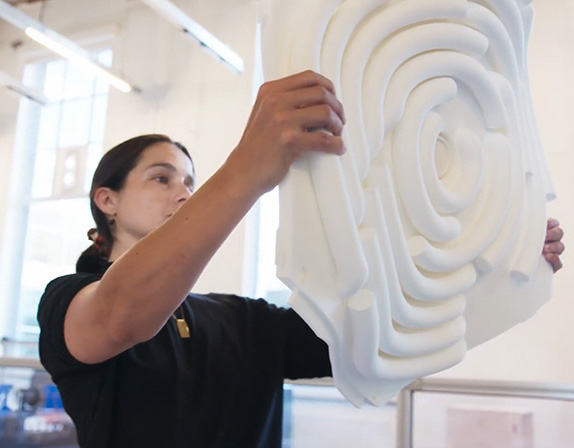A novel project underway at the University of Strathclyde has received just under £500,000 to develop miniaturized acoustic systems by means of additive manufacturing.
The university’s RESINators – Miniature Acoustic Resonator Systems project, delivered in partnership with the University of Glasgow, is exploring ways of creating acoustic resonators formed of metamaterials via 3D printing, rather than relying on electronic systems.
“We are aiming to eventually develop cutting edge systems for personal audio that could constitute the science of audio of acoustic systems for the next generation of technologies in wearable consumer projects,” said Project Lead Dr. Joe Jackson, from the University of Strathclyde’s department of Electronic and Electrical Engineering.
Acoustic 3D printing
Additive manufacturing has been utilized in the past to develop sound-enhancing and proofing properties to objects. Last year, Fraunhofer UMSICHT and Fraunhofer IBP 3D printed fungus-based sound-proofing devices which could be used to fabricate a new line of sustainable acoustic prototypes capable of outperforming conventional products.
Elsewhere, 3D printing has been used to fabricate amorphous to improve the acoustics of guitars, and to fulfill sophisticated underwater acoustic sonar applications. Regarding additive manufacturing’s application for sound-proofing purposes, TU Delft and Materialise have previously worked together to develop 3D printed sound-absorbing acoustic panels that could improve the acoustics within concert halls and sports arenas.

Miniaturizing acoustic systems
The three-year project is funded by the Engineering & Physical Sciences Research Council arm of UK Research & Innovation, and will focus on creating metamaterials with exceptional acoustic performance that can form new acoustic systems built with microscale features.
The crux of the project is to achieve acoustic functionality from simple, easy-to-build systems as opposed to relying on electronics, through manipulating sound with 3D printing to create sound-optimized metamaterials. In the past, miniaturizing acoustic systems such as wearable personal audio and medical devices like hearings has proved challenging and expensive, due to the long wavelengths of sound associated with speech and audible noise.
“The majority of research into the sound-detection part of external hearing aids and cochlear implants – an electronic device that electrically stimulates the cochlear nerve for hearing – is related to electronics, such as the analysis of signals and digital signal processing,” said Jackson. “But this is expensive and takes battery life, and the more advanced the devices, the more impractical they can become, with the user having the charge their hearing aid every few hours, for example.”
The RESINators project is seeking to solve this challenge by investigating how sound works with acoustic resonators formed of metamaterials, a class of materials of which its acoustic properties come from the way it is build, not from what it is built.
The metamaterials leveraged in the project can be constructed in such a way as to create acoustic properties unobtainable in traditional materials, and can deliver extremely efficient noise suppression. The researchers are leveraging 3D printing to build these complex geometrical objects with microscale features that could form the basis of devices such as hearing aids.
“It’s challenging to miniaturize things that you can wear on a very small scale that still works at audio frequencies, so we’re seeking to develop new acoustic systems built with microscale features,” Jackson continued.
“They will operate at audio frequencies pulling together advances in 3D printing and acoustic system design to create materials that have exceptional acoustic performance, while still being lightweight and small scale.”
Dr. Andrew Feeney of the University of Glasgow is providing advanced materials expertise to the RESINator project.
“Advances in our materials science and fabrication capabilities are presenting new opportunities for acoustic devices,” he said. “We are now able to fabricate at smaller scales than ever before, but more importantly we can also detect the motion of these resonators with our advanced characterization facilities, which include non-contact instruments such as lasers.
“I am excited to be part of this project, where our long experience in the development and characterization of advanced materials and devices combines well with Dr. Jackson’s research.”
Subscribe to the 3D Printing Industry newsletter for the latest news in additive manufacturing. You can also stay connected by following us on Twitter and liking us on Facebook.
Looking for a career in additive manufacturing? Visit 3D Printing Jobs for a selection of roles in the industry.
Subscribe to our YouTube channel for the latest 3D printing video shorts, reviews and webinar replays.
Featured image shows hearing in the palm of your hand. A pair of Virto B-Titanium, photo via Steven Hale Hearing


